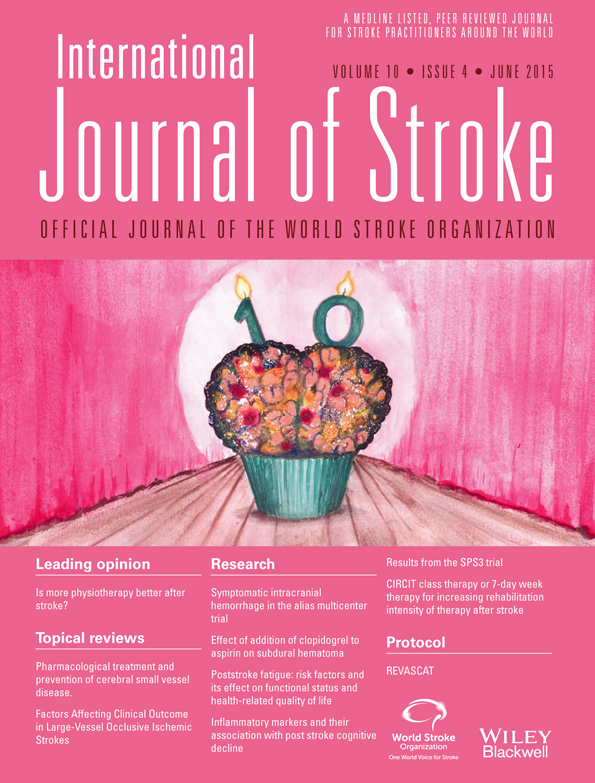National Institutes of Health Stroke Scale score is an unreliable predictor of perfusion deficits in acute stroke
Abstract
Background
Perfusion-weighted magnetic resonance imaging is not routinely used to investigate stroke/transient ischemic attack. Many clinicians use perfusion-weighted magnetic resonance imaging selectively in patients with more severe neurological deficits, but optimal selection criteria have never been identified.
Aims and/or Hypothesis
We tested the hypothesis that a National Institutes of Health Stroke Scale score threshold can be used to predict the presence of perfusion-weighted magnetic resonance imaging deficits in patients with acute ischemic stroke/transient ischemic attack.
Methods
National Institutes of Health Stroke Scale scores were prospectively assessed in 131 acute stroke/transient ischemic attack patients followed by magnetic resonance imaging, including perfusion-weighted magnetic resonance imaging within 72 h of symptom onset. Patients were dichotomized based on the presence or absence of perfusion deficits using a threshold of Tmax (time to peak maps after the impulse response) delay ≥four-seconds and a hypoperfused tissue volume of ≥1 ml.
Results
Patients with perfusion deficits (77/131, 59%) had higher median (interquartile range) National Institutes of Health Stroke Scale scores (8 [12]) than those without perfusion deficits (3 [4], P < 0·001). A receiver operator characteristic analysis indicated poor to moderate sensitivity of National Institutes of Health Stroke Scale scores for predicting perfusion deficits (area under the curve = 0·787). A National Institutes of Health Stroke Scale score of ≥6 was associated with specificity of 85%, but sensitivity of only 69%. No National Institutes of Health Stroke Scale score threshold identified all cases of perfusion-weighted magnetic resonance imaging deficits with sensitivity >94%.
Conclusions
Although higher National Institutes of Health Stroke Scale scores are predictive of perfusion deficits, many patients with no clinically detectable signs have persisting cerebral blood flow changes. A National Institutes of Health Stroke Scale score threshold should therefore not be used to select patients for perfusion-weighted magnetic resonance imaging. Perfusion-weighted magnetic resonance imaging should be considered in all patients presenting with acute focal neurological deficits, even if these deficits are transient.




